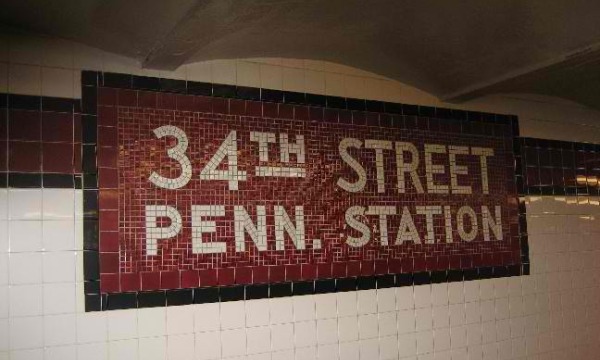A couple of weeks ago, I referred to an article on the importance of signs titled, “The Secret Language of Signs” by Julia Turner in Slate magazine.
She has a second article called, “Lost in Penn Station” that I can really relate to. I like to believe I have a good sense of direction, but New York’s Penn Station just seems designed to confuse and I have been lost in it on more than one occasion.
Turner suggests that the reason Penn Station is so confusing is not that the “wayfinders” who design the navigation system and signage ignored good practice, but that three sets of designers designed three different systems. You see, Penn Station is home to three different railroads: Amtrak owns the station and manages its own concourse, but it leases the rest of the space to New Jersey Transit and the Long Island Rail Road. As Turner notes, each organization’s signage is legible and directs people well within its own concourse, but people using the station often have to navigate across all three to get to where they need to be. She says:
This is a crazy way to manage information at the biggest railway station in the country. The user experiences Penn Station as one place. But the current system assumes that the user experiences the station as three distinct spaces.
Of course, Penn Station is not alone in its craziness. Brands do it all the time. For instance, I do not distinguish between the British Airways Web site, the flight on a BA Boeing 747, arrival at Heathrow’s Terminal 5, or using the company’s customer service hotline. As far as I am concerned, they are all different parts of the experience of flying with British Airways. When one part of that experience fails to meet my expectations, the whole brand suffers. The same is true of banks with ATMs, physical outlets, Web sites and correspondence.
Turner suggests that one of the main reasons Penn Station fails to deliver a positive user experience is that no one is responsible for the entire user experience. She states that the single most crucial thing a wayfinding designer must do is think about the user, anticipate their goals and understand how they will perceive a space. She says:
When signs are good, and you pay attention to them, you can sense the level of thought that went into them. Someone, somewhere, anticipated the journey you are on, and the information you would need. At Penn Station as a whole, it’s no one’s job to think about how you’ll get where you’re going. And you can tell.
I would suggest the same is true of many brands. No one is responsible for the overall user experience and, as a result, the total brand experience is undermined. You might think that this responsibility rests with the Chief Marketing Officer (CMO), but according to a joint research project by Forrester Research and Heidrick & Struggles, most CMOs are not responsible for customer service and support or in-store/branch training.
That seems crazy to me. For many brands, customer service and the in-store experience probably have far more influence on brand loyalty – good or bad – than anything else. If the CMO is charged with developing positive brand perceptions and value, then they should at least have control over the most important elements of the brand experience.
Maybe what brands need is not a CMO, but a Chief Brand Wayfinder, someone charged with being responsible for the overall user experience. What do you think?
The Blake Project Can Help: The Strategic Brand Storytelling Workshop
Branding Strategy Insider is a service of The Blake Project: A strategic brand consultancy specializing in Brand Research, Brand Strategy, Brand Licensing and Brand Education






One comment
Steve Baxter
March 27, 2013 at 5:50 am
…or you could flip that around the other way.
Imagine the New Jersey Transit Marketing meeting: “Penn Station wants us to drop our branding style in favour of a unified Penn Station style”. Eek!
Substitute “BA” for “New Jersey Transit” in your text and the problem become very clear. Companies do want a consistent brand throughout their customer’s experience. As soon as the customer steps outside ‘their’ domain, they’re on their own.
I don’t think there’s an easy solution to this conflict.
Comments are closed.